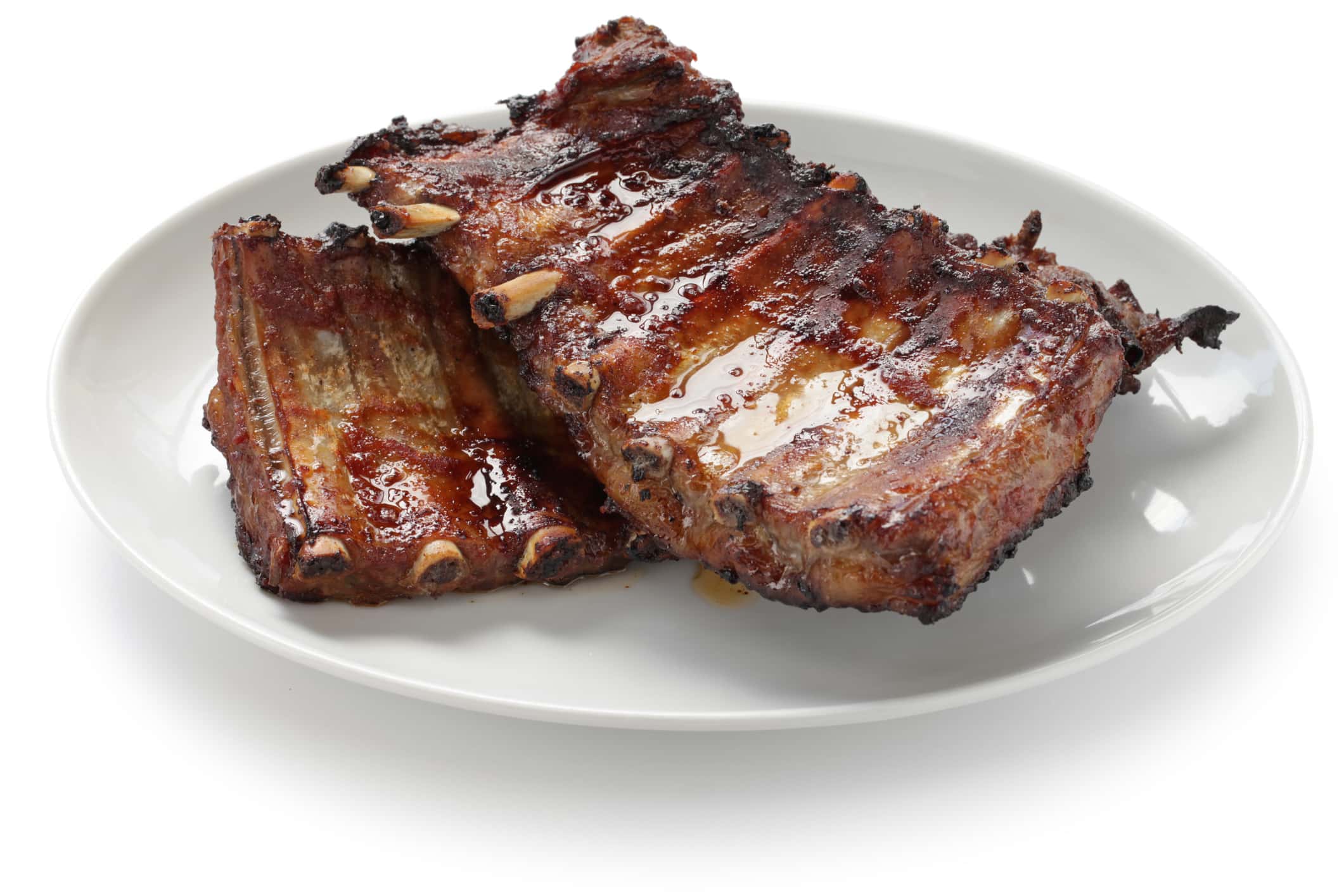From a nutritional standpoint, what is the difference between pork vs. chicken? These two types of meat come from different animals and each has its own nutritional makeup. Both pork and chicken possess different cuts of meat. These range from light meat to dark meat, depending on where it is cut from.
The popular cuts of meat on a pig include the hams, chops, pork belly, shoulder cuts, spareribs, and loin roasts. Whereas the popular cuts of chicken are drumsticks, chicken breasts, wings, and legs. People use pork and chicken in all kinds of dishes, all over the world. From soups and stews to barbecues, both kinds of meat are dried and roasted, broiled, or boiled!
- The must-have convenient reference guide for every home cook!
- Includes more than 8,000 substitutions for ingredients, cookware, and techniques.
- Save time and money on by avoiding trips to grab that "missing" ingredient you don't really need.
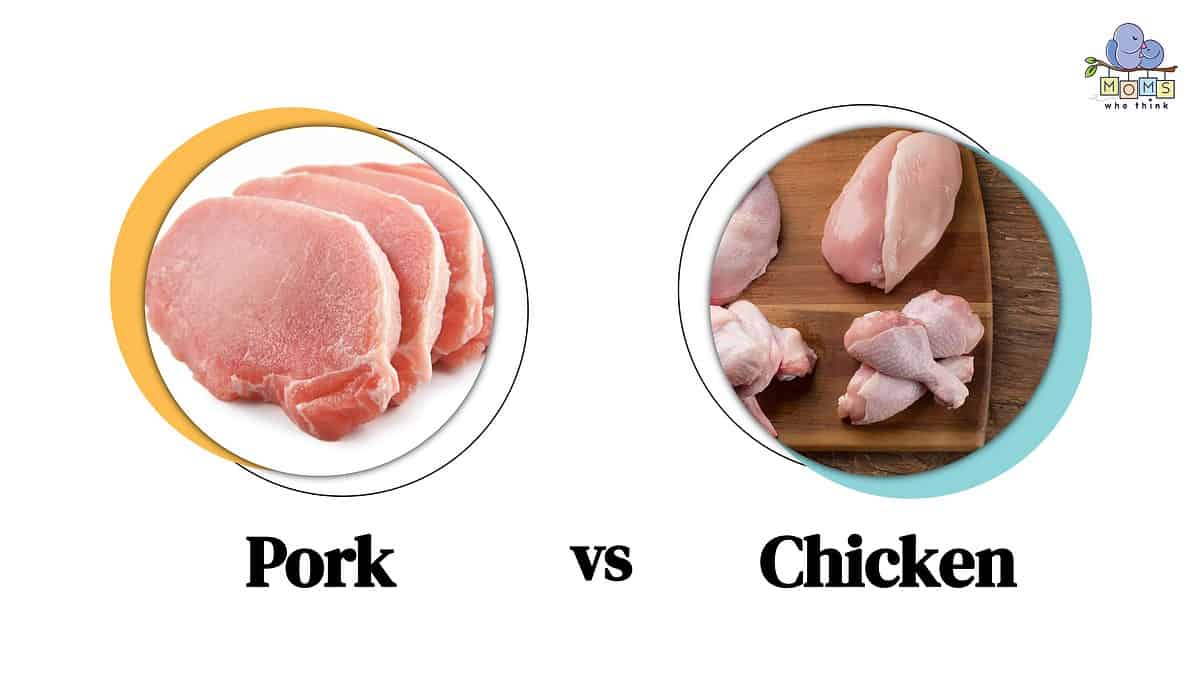
In this post, you'll learn about the dietary differences between these two types of meat. We’ll talk about their nutritional markers, the best ways to cook them, and some of their history. By the end of this, you’ll know every major difference between pork vs. chicken.
Pork vs. Chicken: How Are They Different?
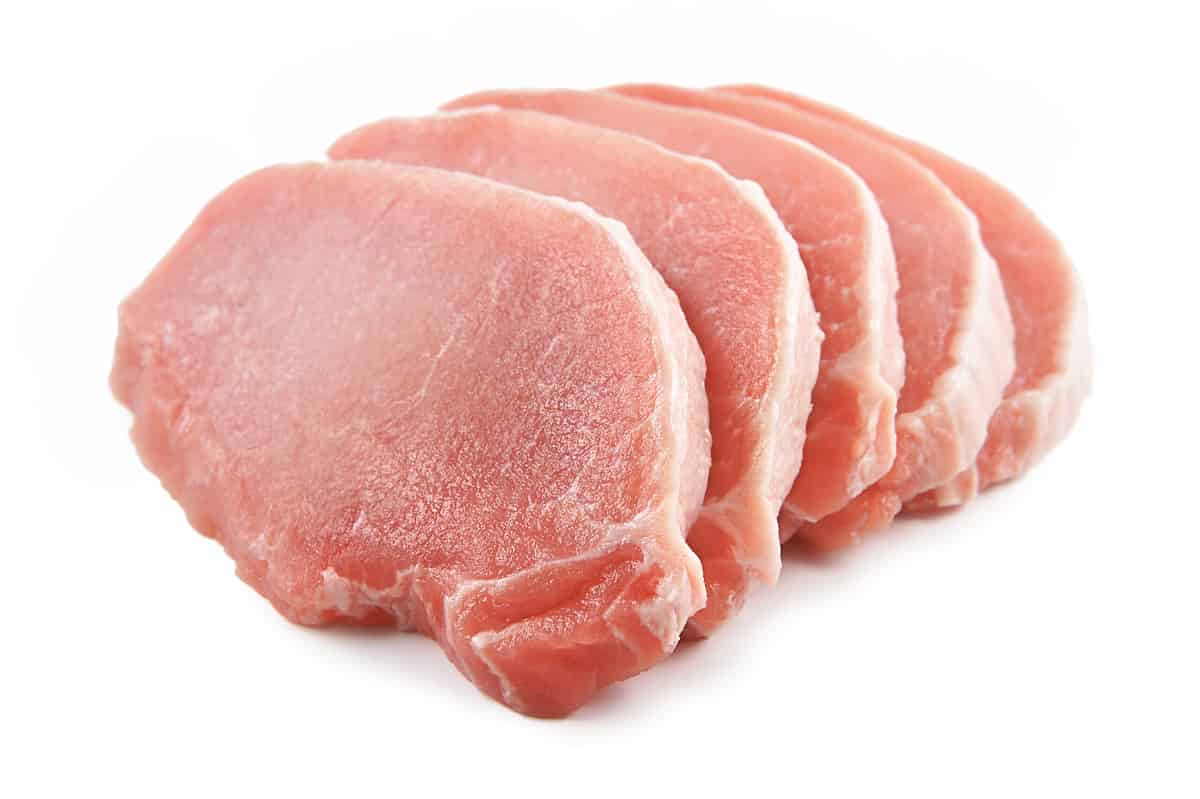
Raw pork chops
©Mirek Kijewski/Shutterstock.com
The primary difference between pork and chicken is their flavor. While chicken is mild and used in a variety of dishes, pork has a more distinctive flavor and is often topped with flavorful sauces and rubs.
In terms of cooking, some cuts of pork (ribs and pork belly are two examples) are slow-cooked which helps increase tenderness and render fat while chickens are often cooked more quickly.
Finally, chicken is typically leaner than pork, which leads to fewer calories. Keep in mind that the cut of both animals will dictate how many calories it has. Dark chicken meat has more calories while pork cuts with higher fat content will have more calories than leaner cuts.
Let's dig into pork and chicken individually.
What is Pork?
Pork is processed pig meat. Pigs are among the first wild animals to be domesticated. They are now raised on lots of farms and in facilities specifically for use in the food industry. There are some 740+ breeds of domesticated breeds. This is according to a report from the UN's Food and Agricultural Organization done in 2007 (via A-Z Animals). In terms of their meat, the major cuts of pork come from the shoulders, the belly, the hams, chops, loins, and spareribs. All of these cuts are prepared in different ways for particular recipes. Pork is classically liked to many barbeque recipes. However, it can also be dried or used in stews, roasts, and a variety of other dishes. Pork, much like chicken, is an incredibly versatile meat that is used in recipes all over the world.
Where Does it Come From?
There is fossil evidence that pigs, or a version of them, have been roaming parts of Europe and Asia as far back as 40 million years ago. They were eventually domesticated in China by 4900 B.C. and made their way to Europe some years later. Native Americans used pigs in their cooking. which caused fighting where pigs were involved with certain land rights. The fact that pigs breed easily meant once pigs were introduced to a wide open space on any area of land, they would double and triple quite quickly.
In terms of the pork processing industry, herds of pigs spread through the colonies of Massachusetts, New Mexico, Virginia, Pennsylvania, and New York State. Pig farmers became processing centers for meat and corn was the main dietary staple of these many new world pigs. Cincinnati was the first major pork packing plant city. Eventually, the midwest took over production because of the high volume of corn crops available to feed the growing masses. Modern-day pig farming places the U.S. as a leader in pork production and exportation (via Texas Pork Producers Association).
How to Cook Pork
There are many ways to cook pork. Cook the heavier cuts for longer. Leaner cuts can be seared, boiled, grilled, roasted, stewed, and braised. Check out some of these great pork recipes:
- Pork Tenders with Honey Mustard Sauce Recipe
- Tangy Pulled Pork Sandwiches
- Lemon Basil Pork Chops
- Carmelized Brown Sugar Molasses Pork Tenderloin
- Italian Pork Chops
- Boneless Pork Medallions in Mushroom-Wine Sauce
You can always do some more research to find recipes that fit your dietary needs and particular preferences!
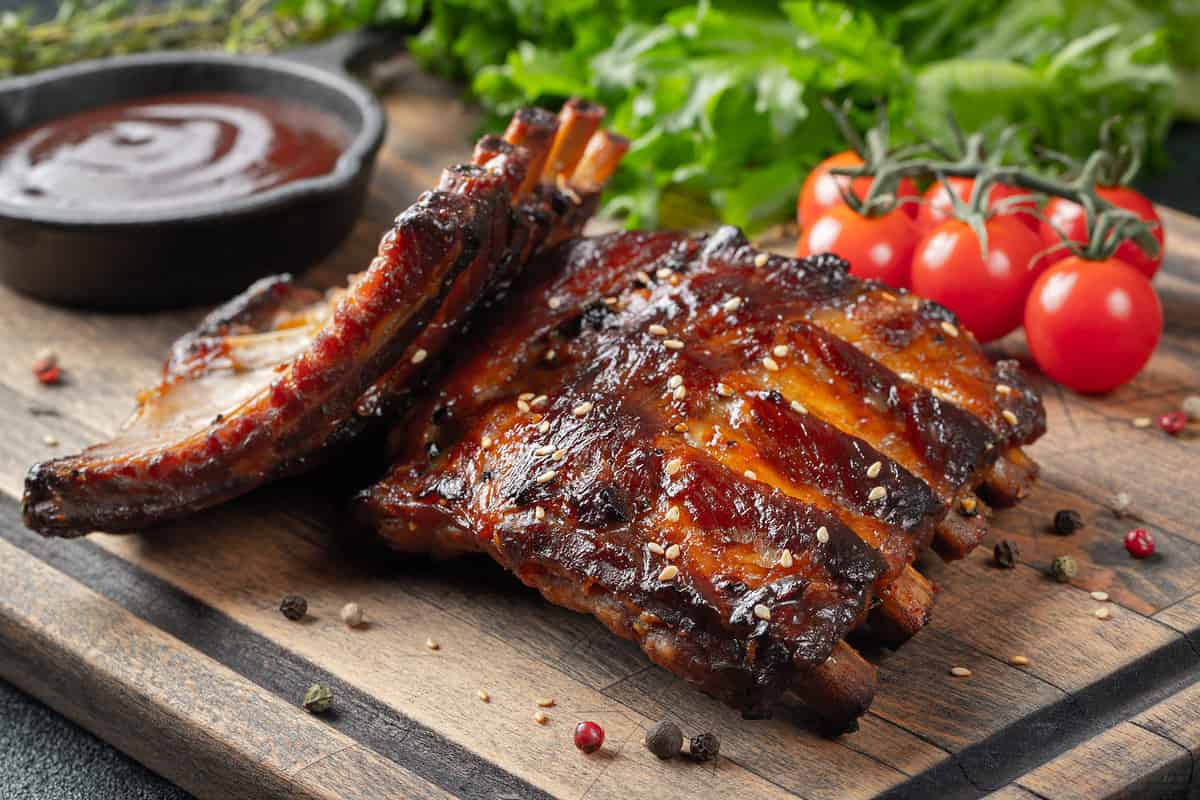
Spareribs are fantastic when grilled with some barbeque seasoning and veggies!
©vasiliybudarin/Shutterstock.com
Popular Variations
According to Brittanica, the top pork-consuming countries are Germany, Poland, Denmark, and Austria. However, its popularity in the States centers on recipes for pork loin, leg, and ribs. These cuts are also popular in Europe, with similar cooking styles. In the parts of the U.S. South, pig ears, hooves, and even brains, are served with vegetables or greens. In Asian cooking styles, pork is dried, shredded, cubed, or stir-fried. You'll find these in noodle dishes and broths as well as in dumplings, rolls, and breads.
- The must-have convenient reference guide for every home cook!
- Includes more than 8,000 substitutions for ingredients, cookware, and techniques.
- Save time and money on by avoiding trips to grab that "missing" ingredient you don't really need.
What Is Chicken?
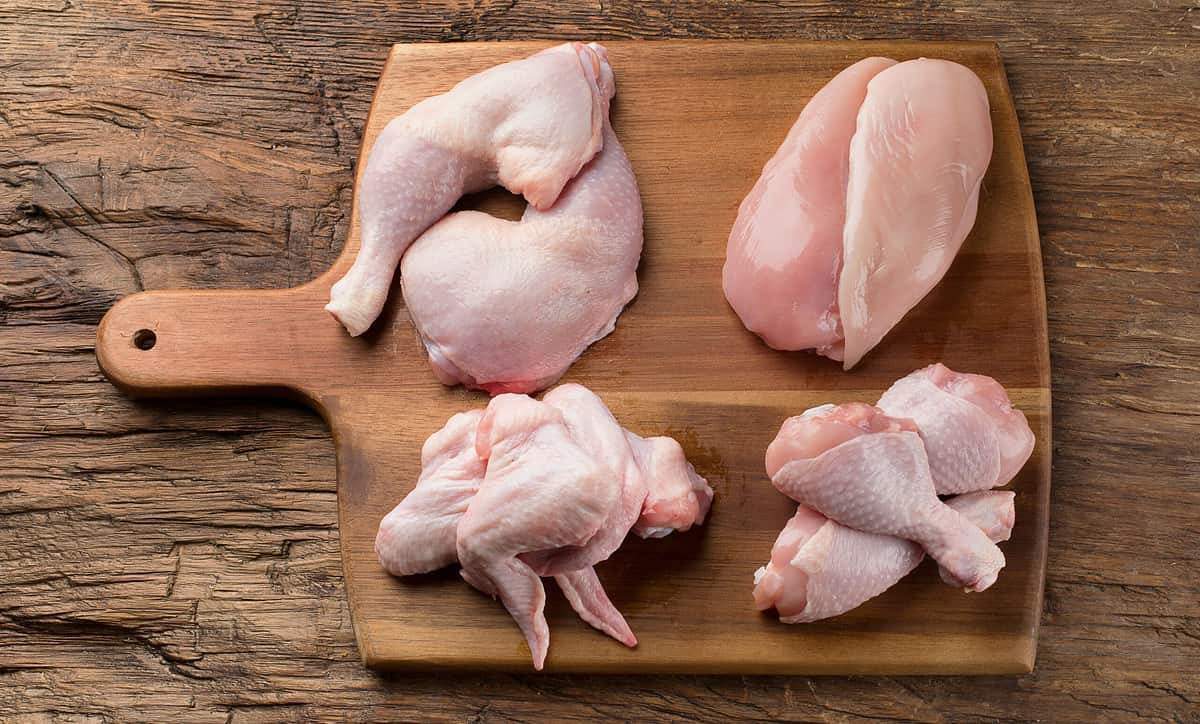
©Tatjana Baibakova/Shutterstock.com
According to A-Z Animals, chickens are the most domesticated class of landfowl in the world. Chickens are widely kept for their eggs and often processed for their meat, once they reach a certain age. There are many variations of chickens, however, they all fall under the same scientific genus, phylum, and family characterization. In terms of diet, when left to their own devices, chickens forage for food. They go for a combination of insects, seeds, fruits, and veggies. However, chickens will eat smaller animals like lizards, mice, and snakes when the opportunity arises. Chickens bred for the food industry eat a diet of chicken feed that boosts their nutritional makeup for processing.
Where Do Chickens Come From?
Chickens were likely domesticated some 10,000 years ago, from wild chickens that roamed parts of Asian continents. The earliest fossil of a chicken-like bird dates back to 5400 B.C. From there this particular fowl has links to birds from parts of India and similarities to the fowl of Africa. Chickens are truly descended directly from the dinosaurs! It didn't take long for this egg-laying and delicious-tasting bird to become part of the trade routes. From there it spread it and its future generations far and wide. In Egypt, they were fighting birds, in Rome, they were heavily farmed before the great collapse of this ancient city. Theories suggest that Polynesians first brought this landfowl to South America. In the following decades, factory farming cemented chickens as a staple of the meat industry in not only the U.S. but all over the world (via The Smithsonian Magazine).
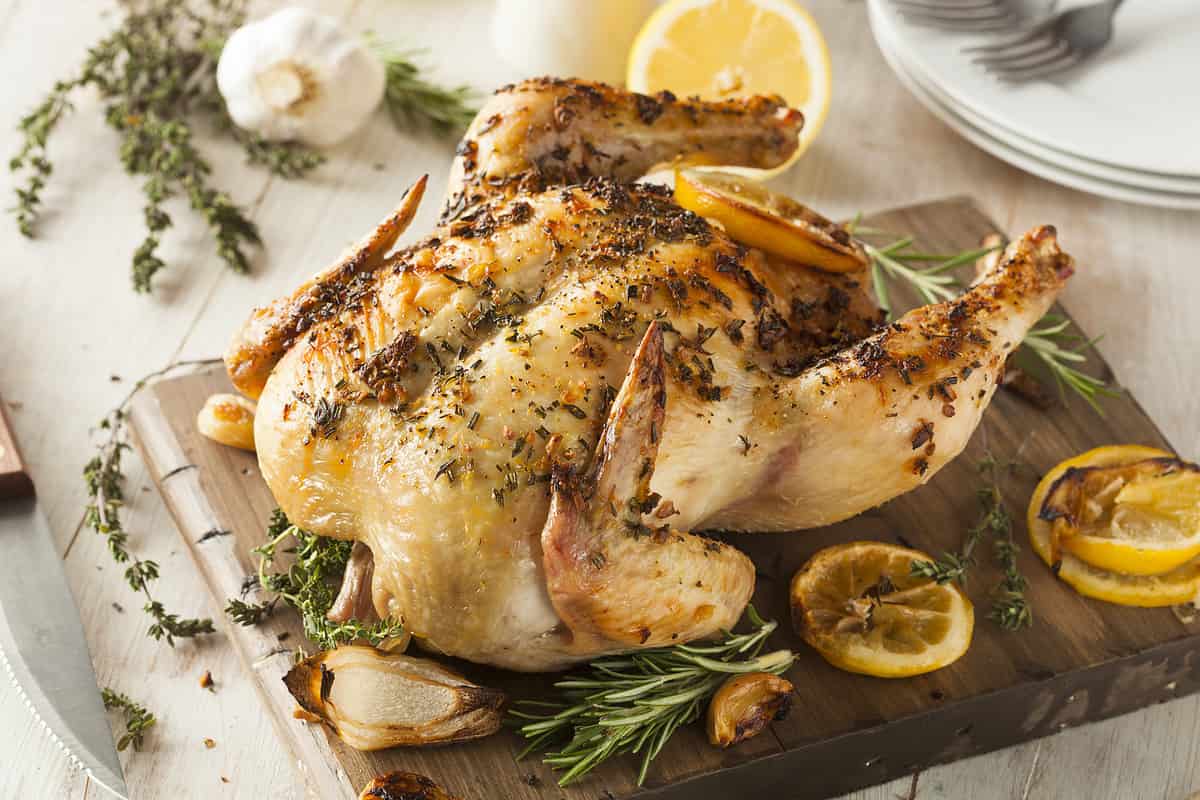
Whole roasted chickens with a combination herb butter are quite easy to make and so good to eat!
©iStock.com/bhofack2
How to Cook Chicken
There are many ways to cook chicken. You can roast, poach, fry, braise, smoke, grill, boil, and broil them – and that's not even all of the ways! The most popular cuts of chicken are the breast meat, thigh and legs, wings, and drumsticks. Although the organs of a chicken, like the heart and the liver, can be processed and eaten as well. Use the bones to make bone broth and simmer the meat to make chicken broth. Chicken stock can be commercially processed to make boullion, which comes In cubed, paste, or powdered form! Check out some of these great chicken recipes:
- Baked Chicken Nuggets
- Chicken Enchiladas With Tomatillo Salsa
- Slow-Cooked Honey Pineapple Chicken
- Spinach Mushroom Smothered Chicken
What is Healthier: Pork or Chicken (Calories, Fat, and Vitamins)
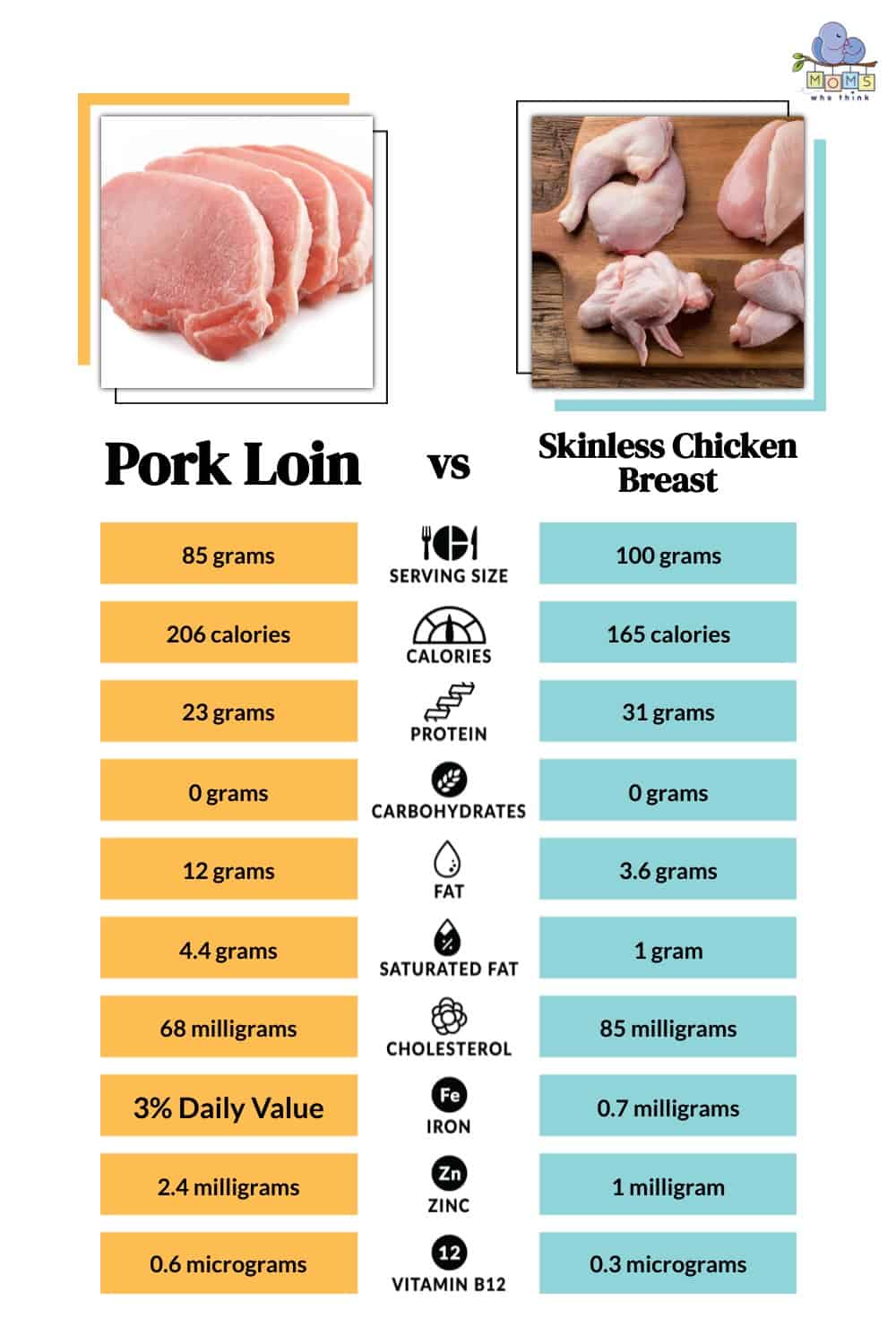
When considering pork vs. chicken, it's worth it to know that the cut of the meat has a big impact on its nutritional profile. For instance, some lean cuts of pork can have more calories than certain cuts of chicken. Generally, dark chicken meat (thighs and drumsticks) has about 20% more calories than white chicken meat. However, when comparing pork cuts with more fat versus chicken, the pork cut will likely have more calories. Keep in mind that a lot of these numbers will also depend on how the meat is seasoned and what it is served with.
For a more in-depth look at each type of meat, the USDA lists an 85-gram serving of pork loin at 206 calories with 12 grams of fat and 23 grams of protein. By comparison, skinless chicken breast has 165 calories with 31 games of protein and just 3.6 grams of fat in a 100-gram serving.
Chicken breast contains niacin, selenium, phosphorous, riboflavin, zinc, thiamin, potassium, and copper. It also contains B6 and B12 vitamins.
3.5 ounces of cooked, ground pork (a different version of the meat compared above) on the other hand, has about 297 calories, 25.7 grams of protein, and 20.8 grams of fat. Pork naturally contains lots of similar vitamins and minerals to chicken and it is also a good source of iron.
Possible Alternatives to Pork and Chicken
In this day and age, there are all kinds of meat alternatives on the market. Try out Beyond Meats from the freezer aisle or tofu-based alternatives. Seitan or tempeh are great choices. You can also try cooking with jackfruit or other vegan alternatives. Most of the above-mentioned recipes could be altered to fit the needs of your diet, sans pork and/or chicken!
- The must-have convenient reference guide for every home cook!
- Includes more than 8,000 substitutions for ingredients, cookware, and techniques.
- Save time and money on by avoiding trips to grab that "missing" ingredient you don't really need.
Are Pork and Chicken the Same Thing?
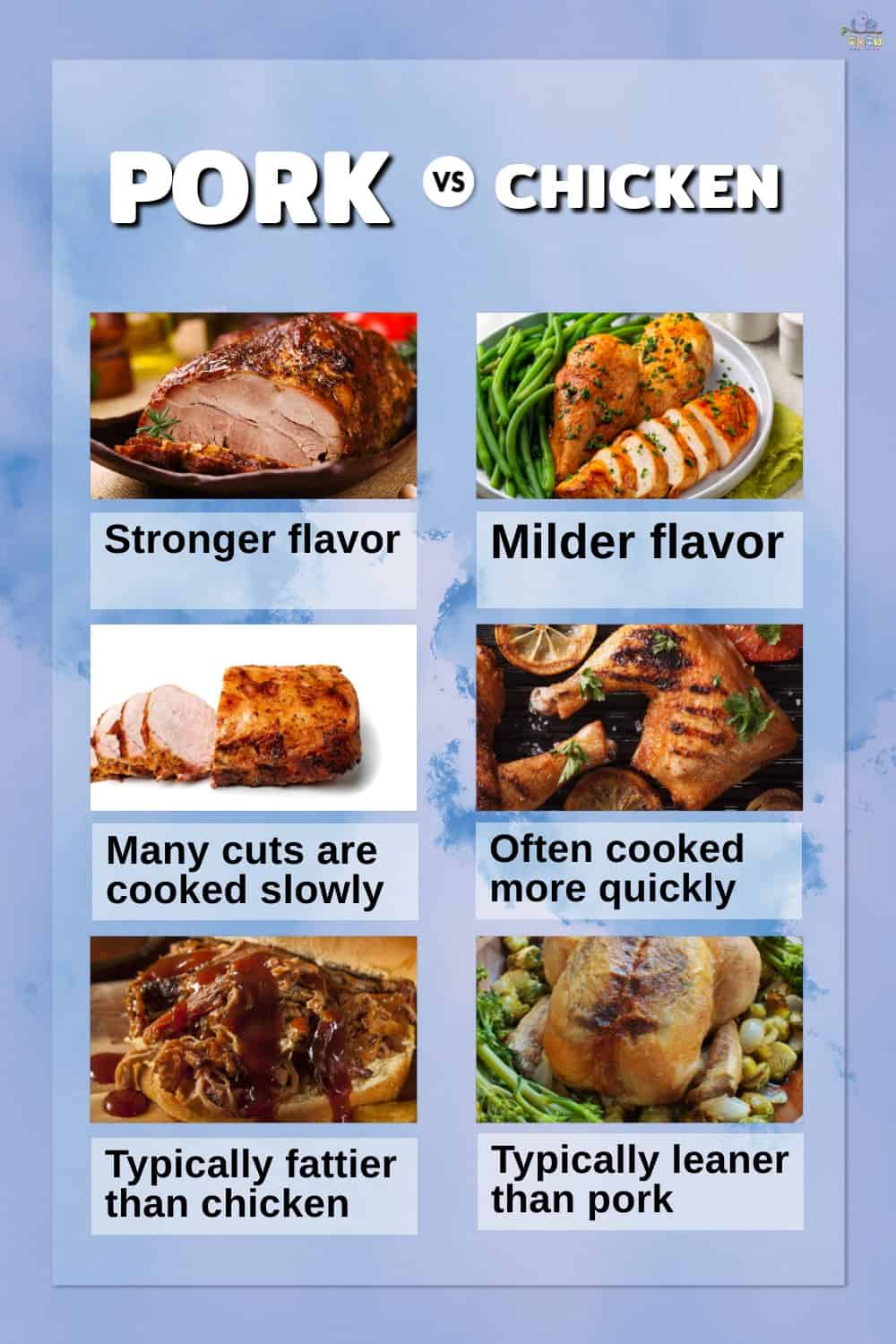
- Chicken is known for its mild flavor, which can easily be adapted to a variety of recipes. Pork, on the other hand, has a more robust flavor.
- Many cuts of pork are cooked slowly to ensure optimal tenderness. While chicken can certainly be cooked slowly, it isn't as common.
- Pork tends to be fattier than chicken, but this is entirely dependent on the type of cut you're considering. Always be sure to check nutrition labels!
The short answer is, no, pork and chicken are not the same thing. They come from different animals and have different tastes and textures. They can be used in specific dishes, or together and do share some of the same nutritional makeup, but while they are both types of meat, they are inherently different foods.
Still in search of a great chicken recipe? Check this one out:
PrintChicken Biscuit Stew
- Yield: 4 servings
Ingredients
1 cup julienned carrots
1 cup thinly sliced onion
2 garlic cloves, minced
2 teaspoons olive oil
1 pound boneless skinless chicken breast, cut into 1 inch cubes
1 Tablespoon all-purpose flour
1/4 cup water
3 Tablespoons white wine or chicken broth
1 cup (8 ounces) fat free plain yogurt
1 cup fresh or frozen peas
1/4 teaspoon each curry powder, salt, pepper, ground cumin, and ginger
BISCUITS:
1 cup all-purpose flour
1 teaspoon baking powder
1/4 teaspoon baking soda
1/4 teaspoon salt
4 1/2 teaspoons cold butter
1/2 cup fat free plain yogurt
1 1/2 teaspoons dried parsley flakes
Instructions
1. In a large nonstick skillet, sauté the carrots, onion, and garlic in oil until tender.
2. Add chicken; cook and stir for 5 minutes.
3. Combine the flour, water, and wine or broth until smooth; add to the skillet. Bring to a boil; cook and stir for 2 minutes or until thickened. Reduce heat; stir in yogurt, peas, and seasonings. Transfer to a shallow 1 1/2 qt. baking dish coated with cooking spray; keep warm.
4. For biscuits, combine flour, baking powder, baking soda, and salt in a bowl. Cut in butter until crumbly. Stir in yogurt and parsley. Drop eight mounds over warm chicken mixture.
5. Bake, uncovered, at 350° for 25 35 minutes or until biscuits are golden brown and stew bubbles around the edges.
Nutrition
- Serving Size: 1 cup stew with 2 biscuits
- Calories: 413
- Sodium: 895mg
- Fat: 9g
- Saturated Fat: 1g
- Carbohydrates: 47g
- Fiber: 5g
- Protein: 37g
- Cholesterol: 68mg
The image featured at the top of this post is ©iStock.com/bonchan
